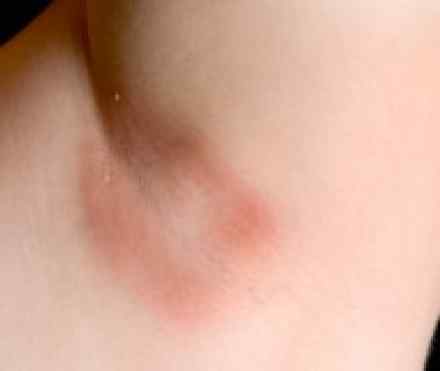
What is it?
It's possible for a man to contract a genital yeast infection if he has unprotected sexual intercourse with a partner who has a genital yeast infection. However, just because your girlfriend has a yeast infection doesn't mean you will get one too. Sexual transmission of yeast infections is uncommon.
Many people are under the impression that only women get genital yeast infections. Regardless of your sex, though, prolonged antibiotic use increases your risk of a yeast infection. Also, men and women with diabetes or impaired immune systems, such as those with HIV, are more susceptible to yeast infections.
Signs and symptoms of a male yeast infection include a reddish rash, along with itching or burning at the tip of the penis. Fortunately, most male yeast infections are easily treated with an over-the-counter antifungal treatment, such as Monistat (yes, men can use it too). Apply the medication directly to the affected skin twice daily for a week. If the rash doesn't go away, or if it recurs frequently, consult your doctor.
If you and your partner have symptoms of genital yeast infection, it's important that you both be treated. Otherwise, you may keep reinfecting each other. Also, it's generally recommended that you refrain from sexual contact until all signs and symptoms of the infection are gone.
Symptoms
Around the head of the penis:
- Red Skin
- Swelling
- Irritation and soreness
- Inflammation
- Itchiness
- White patches on the skin
Foreskin:
- Difficulty pulling back the foreskin
- Thick, lumpy discharge under the foreskin, producing a unpleasant odour
Pain:
- Passing urine
- During intercourse
Causes
Genital candidiasis, often referred to as yeast infection, is caused by the fungus Candida. As well as affecting the genitals, yeast infection can be found on other areas of skin or mucous membtrane such as the mouth, where it known as oral thrush. Candida fungi are found naturally inside the body and on the skin at levels that usually don't cause problems. However, under certain conditions the fungus is able to thrive and grow to numbers that result in candidiasis, with the fungal cells producing hyphae (structures that penetrate the tissue).
While yeast infection in men is generally sexually acquired, it's not classed as a sexually transmitted disease (STD) because it can be present in men who are not sexually active. Men who have a female partner with yeast infection do not need to seek treatment unless they also get symtoms, since sex does not necessarily result in transmission of the fungal infection to men.
Men are recommended to avoid unprotected sex until the woman's infection has cleared upafter treatment.
Risk factors
- Antibiotics - recent broad-spectrum antibiotic use, which causes a change in the balance of the normal microbial flora and allows the Candida to overgrow.
- Medicaton that suppresses the immune system such as chemotherapy or corticosteroids.
- Immunosuppresion - such as with HIV infection reduces the body's defence against the fungus.
- Diabetes - Higher levels of blood sugar allow a more conductive evironment for the yeast to thrive.
- Uncircumcised men - have a moist, dark, warm, space underneath the foreskin that is favorable for yeast growth.
- Personal hygeine - Chronic local irritants such as bath foam, soaps and shower gel can irritate the penis leading to fungal infection. not drying carefully after washing is also a risk factor.
- Receiving renal dialysis.
References
http://www.mayoclinic.org/male-yeast-infection/expert-answers/faq-20058464
http://www.webmd.com/skin-problems-and-treatments/guide/candidiasis-yeast-infection
http://www.std-gov.org/stds/yeast_in_man.htm
http://www.medicinenet.com/yeast_infection_in_women_and_men/page4.htm
http://www.medicalnewstoday.com/articles/246615.php?page=2

